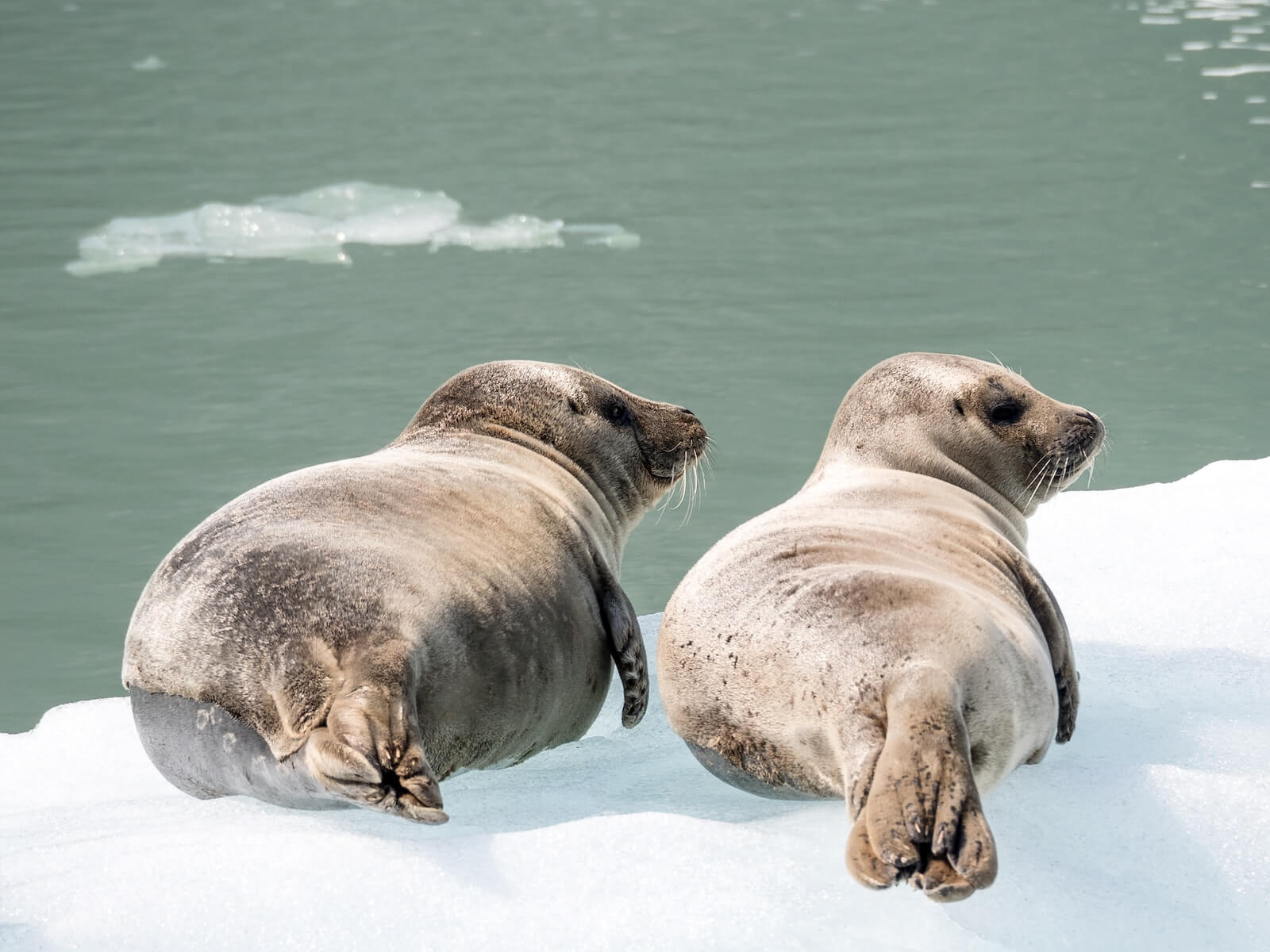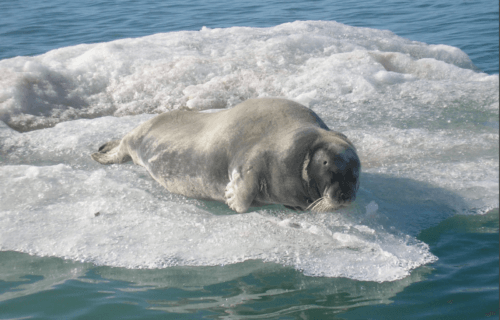TRONDHEIM, Norway — Seals in the Arctic have evolved to survive by developing larger nostrils, a new study reveals. These blubbery mammals maintain warmth and hydration in harsh, freezing conditions through their enlarged, more complex nasal passages, according to scientists in Norway, who add that this discovery holds the potential for designing more effective heating and ventilation systems.
Researchers from the Norwegian University of Science and Technology pointed out that Arctic seals have adapted in various ways to thrive in their frosty habitat. A notable adaptation, which may not be immediately obvious, is the unique structure of the bones in their nasal cavities. The research team discovered that the nasal passages of Arctic seals are more intricate compared to those of seal species living in milder climates.
These specialized nasal structures enable the seals to more efficiently conserve heat and moisture during respiration.
“Thanks to this elaborate structure in their nasal cavities, Arctic seals lose less heat through nasal heat exchange than subtropical seals when both are exposed to the same conditions,” says corresponding author and physical chemist Signe Kjelstrup of the Norwegian University of Science and Technology in a media release.
“This provides an evolutionary advantage, especially in the Arctic where heat loss is energy dissipation, which must be replenished by food.”
“What’s so amazing is that these Arctic seals retain 94% of the water when they breathe in and out,” Kjelstrup continues. “This means that most of the water added to the air during inhalation is then recovered during exhalation.”

The NTNU researcher explains that in cold, dry environments, animals risk losing heat and moisture simply through the act of breathing. To minimize this risk, most mammals and birds possess complex bones within their nasal cavities known as maxilloturbinates. Prof. Kjelstrup highlights that these porous, bony structures are covered with a mucosal tissue layer that is richly vascularized. This layer plays a crucial role in warming and humidifying the air inhaled, which is vital for lung function, and also helps to reduce the loss of heat and moisture during exhalation.
However, the structure of these bones varies across different species. The research team had previously demonstrated that the noses of reindeer facilitate efficient heat exchange in cold environments. Since reindeer do not inhabit a variety of environments, the researchers shifted their focus to seals. Their goal was to determine if there were any unique characteristics in the noses of Arctic animals.
“You can’t find reindeer in the middle of the Mediterranean, but seals live in many different environments, so they allowed us to test this question,” says Kjelstrup. “And we knew from a previous study that Arctic seal noses are sponge-like and very dense, whereas the Mediterranean seal nose has a more open structure.”

The research team utilized computer tomography to create 3D models of the nasal cavities of two seal species: the Arctic bearded seal (Erignathus barbatus) and the subtropical Mediterranean monk seal (Monachus monachus). They applied energy dissipation models to assess the seals’ abilities to warm and moisten air during inhalation and to minimize heat and moisture loss during exhalation.
The team conducted tests on both species under Arctic conditions (−30°C) and at 10°C, the latter approximating a cold day for the Mediterranean monk seal. Additionally, they modified various parameters within the model to pinpoint the nasal cavity’s geometrical features critical for its functioning.
Results indicated that Arctic seals are significantly more efficient than subtropical seals at conserving heat and water in both Arctic and Mediterranean ambient temperatures. At −30°C, the Mediterranean monk seals lost 1.45 times more heat and 3.5 times more water per breath cycle compared to Arctic seals. Even at 10°C, they lost 1.5 times more heat and 1.7 times more water.
This efficiency advantage is attributed to the Arctic seal’s more intricate and denser nasal cavity structure. The study highlighted that the increased perimeter of the Arctic seal’s maxilloturbinates is essential in reducing energy dissipation at low ambient temperatures.
While the study focused on moisture and heat loss per breath cycle, the impact of breathing rate remains an unclear factor. This aspect is particularly complex for seals, given their habit of pausing their breathing for extended periods during dives.
The researchers are keen to extend their study to the nasal structures of other species, aiming to understand if different anatomical designs offer evolutionary benefits in various environments.
“The camel, for instance, doesn’t need to save much on heat, but it does need to save on water, so one may speculate that it could tell us something about relative importance of the two,” the study author concludes.
“If nature manages to create such great heat exchangers, I think we should copy that in engineering to create more efficient processes, for instance, in air conditioners.”
The findings are published in the Biophysical Journal.
You might also be interested in:
- Humans hear just as well as seals underwater, study reveals
- Arctic Ocean could be ice-free in summer by 2030s, scientists say
- Gray seals discovered clapping underwater to attract mates, ward off rivals
South West News Service writer Stephen Beech contributed to this report.

